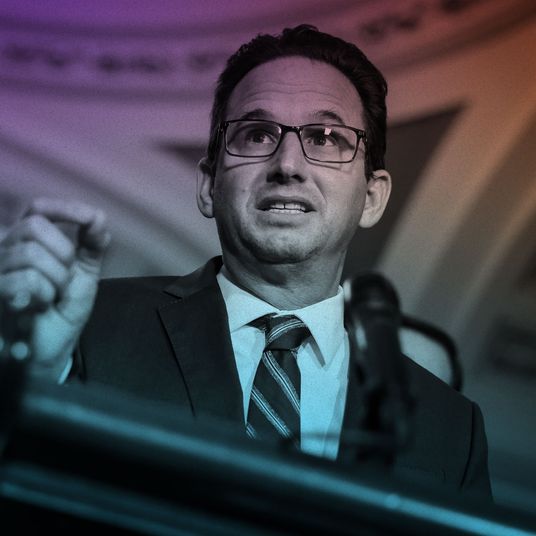
Editor’s note: This piece first ran on January 31, 2011. We are republishing it in its original form because, disturbingly, not much has changed. Our nation is facing a potentially catastrophic debt default once again and lawmakers — including some of the same officials who negotiated a resolution to the crisis 12 years ago — can’t agree on a plan to raise or suspend the debt ceiling.
The debate over the debt ceiling is heating up in Washington. Chuck Schumer accused the GOP of “playing with fire” yesterday, and potential candidates for the GOP presidential nomination are taking stands. We’ve put together an FAQ for those who really have no clue what this issue is about.
First off, what is debt?
Over the course of a year, if the government of the United States spends more money than it takes in, the difference is called a deficit. The debt is basically like the accumulation of all of the government’s annual deficits.
Okay, what is the debt ceiling?
The debt ceiling is the limit Congress places on how much debt the government is allowed to incur. The current ceiling, which was set at $14.3 trillion in February of 2010, could be reached by the end of March.
So it’s a real ceiling?
What do you mean?
I mean, could I hang a chandelier from it, for example?
Literally?
Literally.
Literally no, you couldn’t do that.
Why?
Well, it’s … what I’m telling you is that it’s not a real ceiling.
So you couldn’t even, let’s say, bang on it with a broom if the people upstairs are being too loud?
What are you not getting about it not being a real ceiling?
It’s just difficult for me to understand the concept without picturing an actual ceiling.
Okay, fine, so let’s say for the sake of explaining things that it is a real ceiling, even though it’s not.
Phew, thank you.
The problem we’re facing is that the “room” is almost completely filled up with debt, and there’s barely any more space. In order to fit more debt in the room, we need to tear off this ceiling and replace it with a higher ceiling. But some lawmakers, mostly tea partiers, believe this would only encourage more debt. They want us to cut spending instead so that the room doesn’t fill up to begin with, but such cuts would need to be so drastic that they’re basically unimaginable. If Congress doesn’t vote to raise the ceiling, the government would default on its financial commitments, resulting, according to Treasury Secretary Timothy Geithner, in “catastrophic economic consequences that would last for decades.”
Do Republican leaders realize how awful that sounds?
Some of them do — Speaker of the House John Boehner, for example, said yesterday that defaulting “would be a financial disaster not only for our country, but for the worldwide economy.”
What material is the ceiling made of?
All right, we’re done here.
What’s the problem?
You’re impossible — it’s not a real fucking ceiling.
You said — and I’m quoting you here — “It is a real ceiling.”
“For the sake of explaining things,” I said.
Well, it’s all very confusing when you go back and forth like that — it’s not a real ceiling, no now it is, now it isn’t again.
Please tell me you don’t vote.
For American Idol?
No, in elections, like for president.
In 2008 I voted for Bill Clinton. I vote for him every time; he’s the best man for the job, in my opinion.
Not only did Bill Clinton not run for president in 2008, but he will never run for president ever again because he can’t constitutionally serve more than two terms.
So it’s like a ceiling on the number of times he can be president.
Yes! Just like —
Just like the actual, tangible debt ceiling, except metaphorical.
I wish for horrible things to befall you.
More on politics
- The Donald Trump–Taylor Swift Drama: A Super Bowl Refresher
- What Elon Musk and DOGE Are Doing to the Federal Government
- Trump Cabinet Confirmation Hearings: Schedule & How to Watch





























